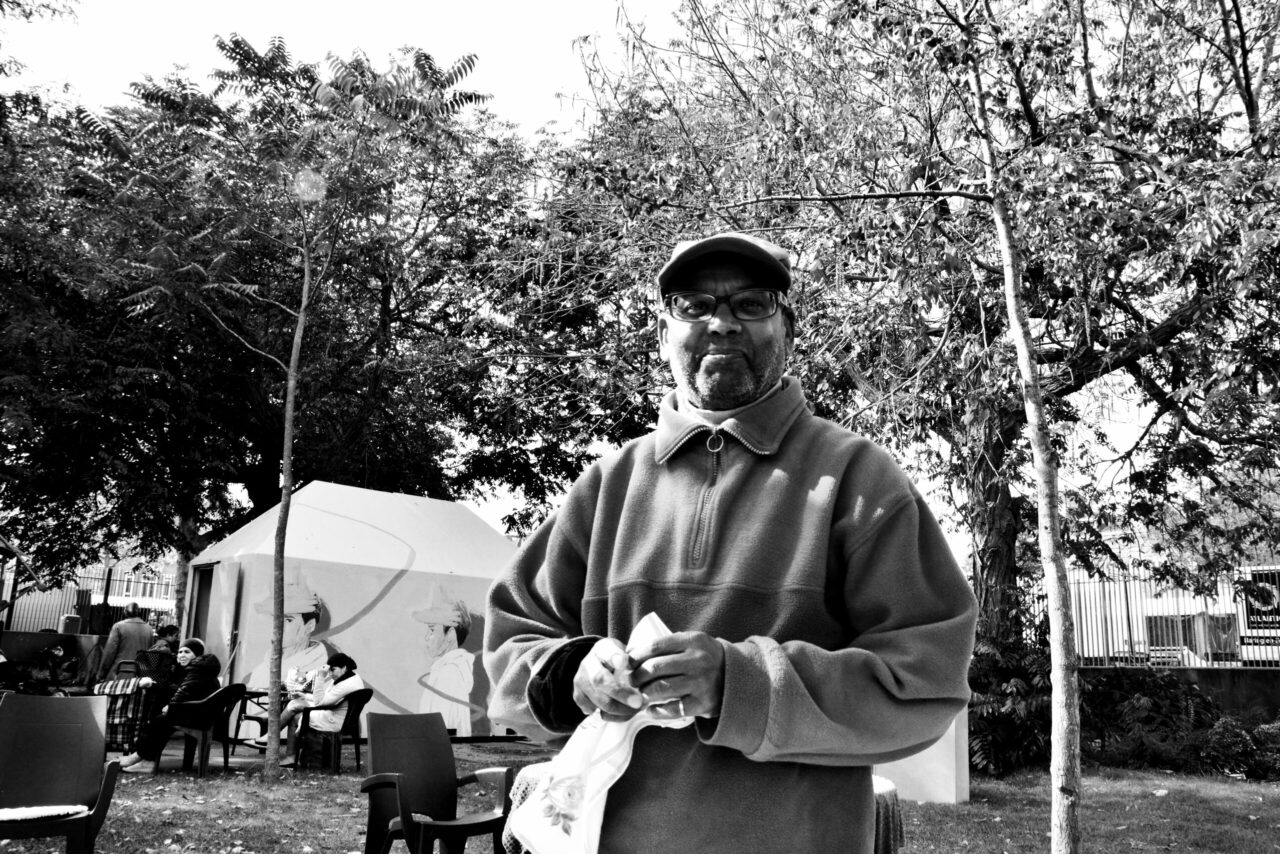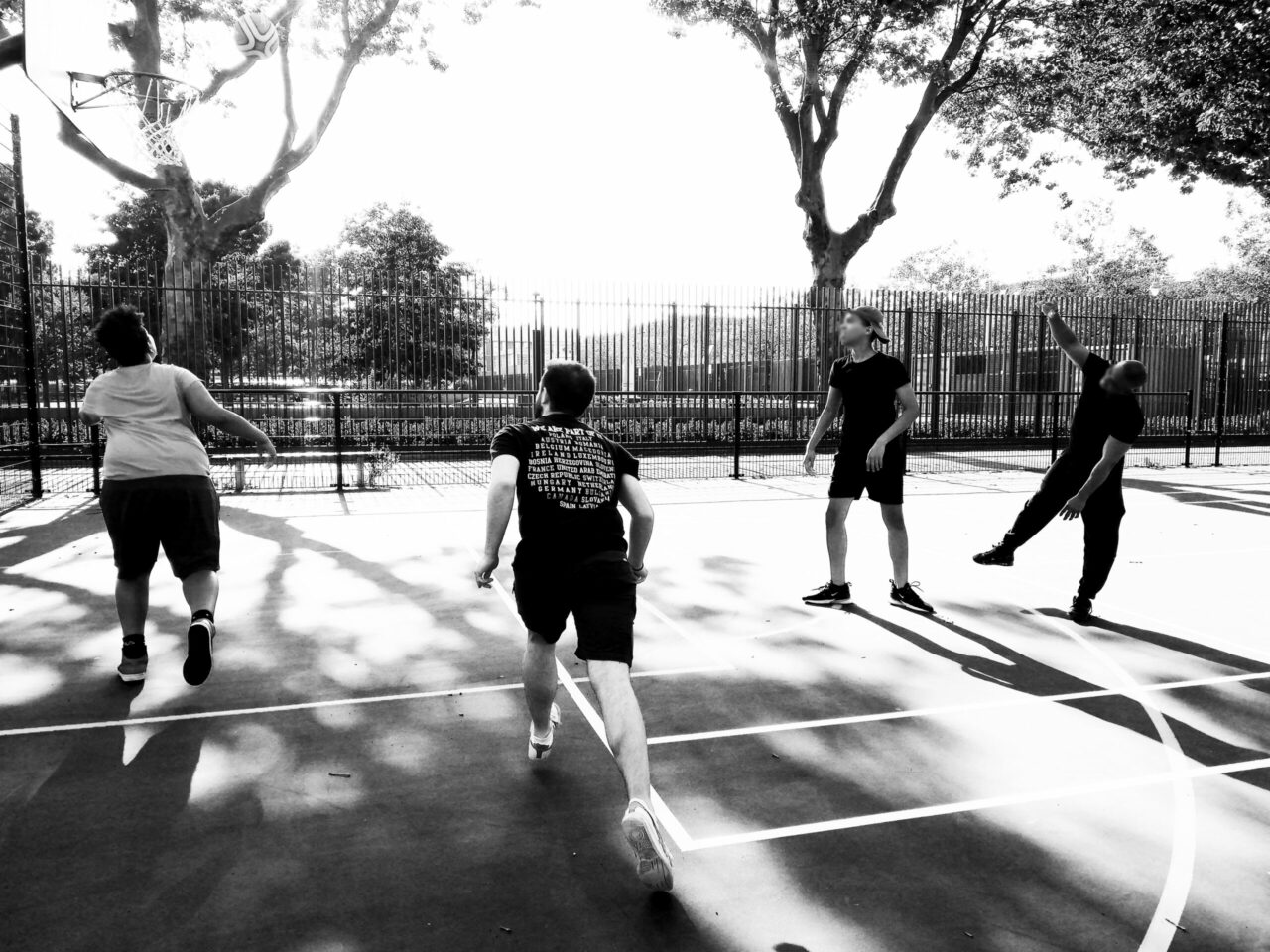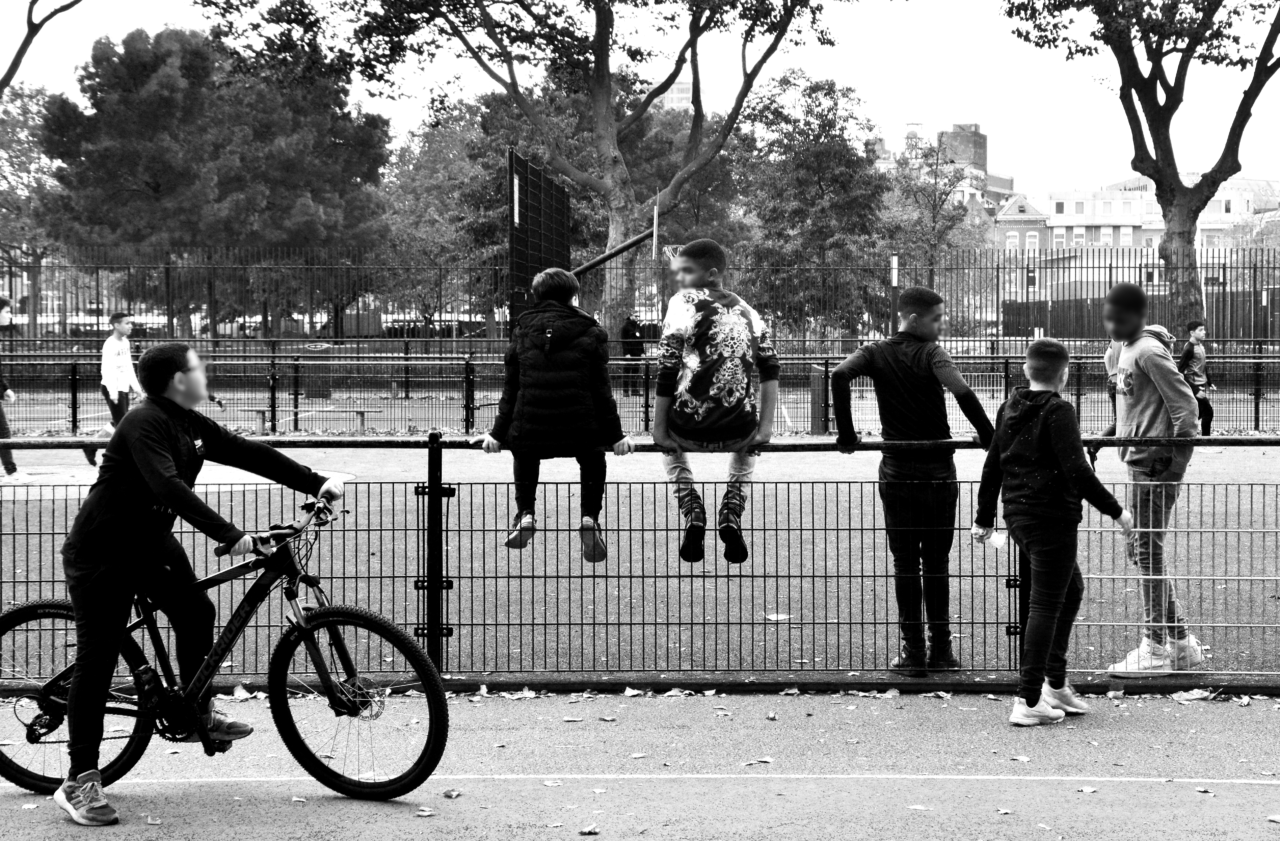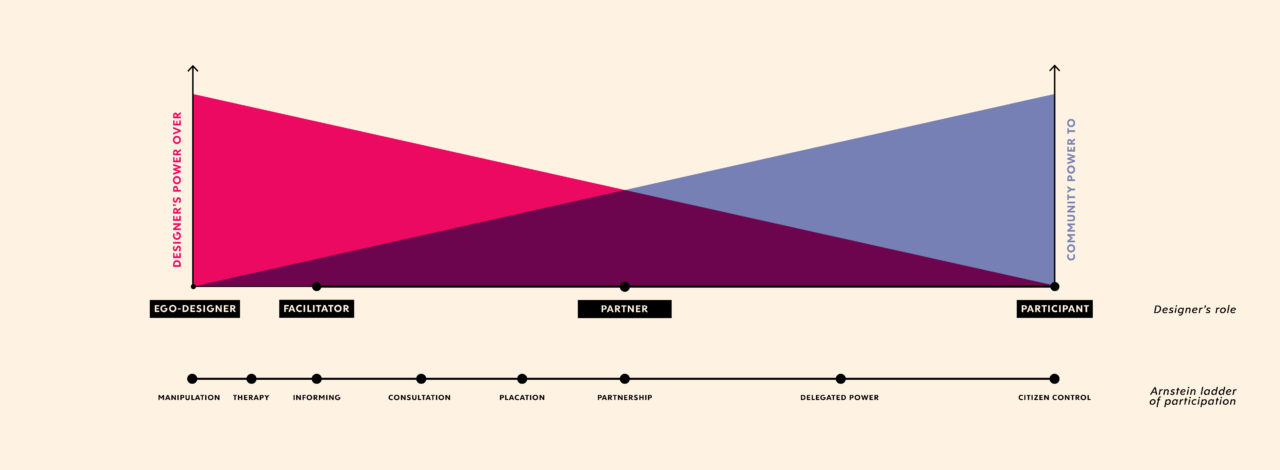Towards a more power balanced PD process
On the re-interpretation of the role of the PD designer and some personal statements for a more power balanced PD process.

Oppressive power dynamics in PD processes
Participatory Design (PD) has been used as a medium to democratize the design practice and include in the design process the people intended to use the outcomes. When working for social change, the practice claims to maintain its democratic nature by giving voice and agency to the most vulnerable in society. However, when engaging in complex societal problems PD can perpetuate systemic oppression and reproduce in the design process the same harmful mechanisms that are intended to be changed. For this reason, it is crucial for PD designers to engage in matters of power dynamics in their practice.
Acknowledging this urgency, Fabiana decided to focus on developing a new understanding for PD that could account for more power balanced relationships between designers and marginalized communities. Fabiana took as inspiration the work of the Brazilian philosopher Paulo Freire who in 1970 developed a pedagogical model where the relationship between the teacher and the student was more horizontal and equal. After reading “Pedagogy of the Oppressed” (Freire, 2000) Fabiana explored how Freire’s legacy could be translated into the PD practice and develop a more socially just process.
Unplanned explorations in Afrikaanderwijk

Fabiana started her journey by conducting a literature review and interviews with design students and practitioners. She understood that designers can hold a lot of power over the community they are working with thanks to practices like framing the problem, deciding what methods to use, and defining the outcomes of the projects. In the second phase of the project, Fabiana took a Research Through design approach, proposing a new process to develop with the community. However, early in that stage, she realized that by proposing a process and timing she was still holding a lot of power to herself. In this way, a power balanced process could be proposed if, and only if, it was developed together with the members of Afrikaanderwijk.
After this realization, she approached the neighborhood very differently. Fabiana decided to go to Afrikaanderwijk without any other intention than connect with the people and look for spaces of engagement and dialogue with them. In this way, she became a participant in the context by doing activities like playing basketball on the weekends, going to a street brunch, assisting at a neighborhood meeting, participate in public theater. She even had a reflective session with two members about social justice, gentrification, and other topics that are important for the community.

Sitting in the back sit of a bike ridden by the community
In one of the explorations in Afrikaanderwijk, a community member named Margreet asked Fabiana to sit on the back of her bike to take her to a neighborhood meeting. As a Dutch woman, Margreet was riding her bike very confidently and very fast even with another person sitting behind her. Fabiana, on the other hand, was quite worried about her safety. She didn’t know the way, nor the final destination and she had to trust Margreet, her skills and knowledge, to get to the new place. Fabiana had to give control away and that’s always a bit scary. However, she ended up in the right place at the right time to meet new interesting, and friendly people. That day Fabiana realized her whole experience in the project was like that ride. It was definitely scary to give control of the process away, it was scary to question the ways she was used to doing design and it was also scary to completely depend on others to build a new process. However, it was worth it. She ended up being in the place she had to be to start understanding new ways of doing PD.
Two research outcomes and a series of reflective questions
The first research outcome of this project is a framework of the re-interpretation of the role of PD designers. The second one, are five personal statements for a more power balanced design process.
Regarding the first outcome, Fabiana developed an axis of the different roles of the designer (and the amount of power they exercise) and compared it to Arnstein’s ladder of participation, a scale that shows different degrees of citizens involvement in participatory projects. She noticed that seen from the perspective of the community, the less power the designer has over the project, the more the members are able to exercise their power to act and influence the process and the outcome. This does not mean that designers are not allowed to exercise their skills or knowledge in a participatory project. Rather, it shows that to balance and redistribute power in a design process, designers need to create spaces for dialogue and re-evaluate and re-negotiate their role depending on the project phase and what it requires.

For the second outcome, Fabiana established five personal statements considering what she learned with her experience doing this project:
- A more power-balanced PD process is built together with the community
- For a power-balanced and socially just PD process the role of the designer needs to be questioned
- In a power balanced process, the designer is designing just in collaboration with the community.
- A PD project for social justice is more than what can be framed by design
- A power balanced PD process needs to be built in reflection and action
To make the insights and the outcomes of her research more useful, Fabiana decided to translate them into a series of questions for other designers. These questions were gathered in a document to be read and used by designers who are willing to start a more power balanced project. The document focuses on the initial stages of a design process and especially in the engagement between the designer and the community.
If you want to know about this project more in detail, the reflective questions and the report can be found here.
Thinking again about that ride in the bike with Margreet, Fabiana would advise other students:
To dare to give control away. It encourages to question assumptions about the design profession and in this way, to work with others for a more equitable and accountable practice.
Arnstein, S. R. (1969). A Ladder Of Citizen Participation. Journal of the American Planning Association, pp. 216–224. https://doi. org/10.1080/01944366908977225
Freire, P. (2000). Pedagogy of the oppressed (30th anniversary ed.). New York: Continuum.